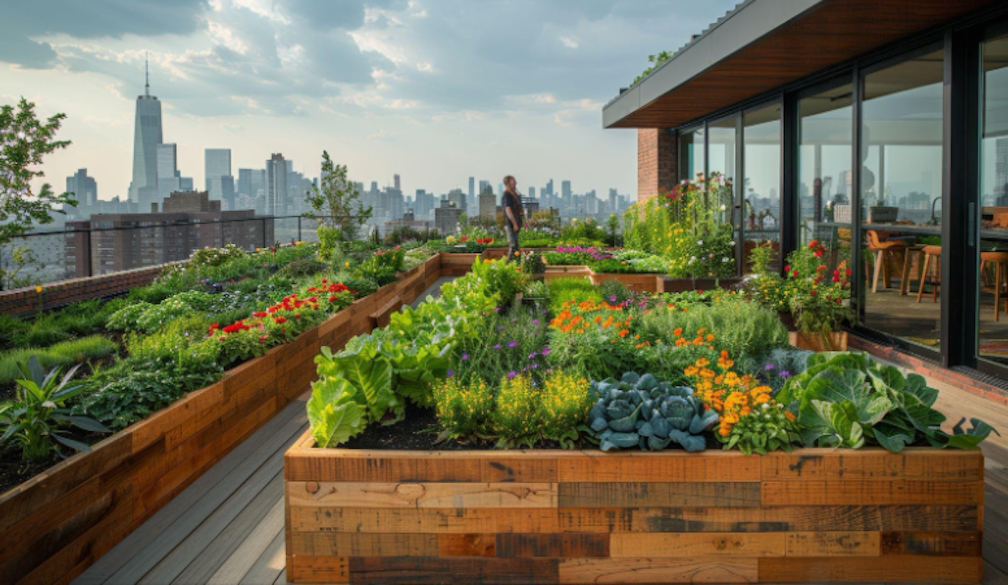Bridging the Gap: How Urban Architecture Integrates Green Spaces

Urban environments are often characterised by dense buildings, vehicular traffic, and limited accessibility to natural green spaces. This setup has, unfortunately, resulted in a significant decrease in green spaces which are essential for improving quality of life, maintaining biodiversity, and providing an ecosystem for local flora and fauna. Interconnecting these green spaces with urban architecture offers a brilliant solution. To fully appreciate this topic, it is essential to first understand what urban architecture and green spaces are, how vital they are, and how effectively they can be incorporated together.
UNDERSTANDING THE CONCEPT OF GREEN SPACES IN URBAN ARCHITECTURE
Green spaces encompass all vegetated land and water within urban areas, such as parks, gardens, green roofs, and waterways. They are vital as they help mitigate urban heat islands, reduce pollution, provide habitats for various species, and contribute to residents' physical and mental wellbeing.
This integration of urban architecture and green spaces has become increasingly popular, with architects seeking innovative ways to prioritise natural environments within urban design. These "green" design elements, like green roofs or parklets, promote sustainability and biodiversity within bustling concrete jungles, showcasing how urban architecture positively impacts green spaces. For instance, Bosco Verticale in Milan, Italy, is a residential tower complex draped in a lush cloak of greenery, highlighting how urban architecture can promote green spaces.
EXAMINING THE BENEFITS OF INTEGRATING GREEN SPACES IN URBAN ARCHITECTURE
A great benefit of integrating green spaces into urban architecture is the enhancement of local ecosystems and biodiversity. Green areas attract a wide variety of flora and fauna, contributing to a healthier ecosystem. Additionally, green spaces greatly assist in improving air quality by filtering pollutants and releasing oxygen.
Moreover, these green spaces significantly impact public health and mental wellbeing. The calming effect of these areas can help alleviate stress and anxiety, while encouraging residents to engage in outdoor physical activities. These peaceful spaces often foster social interaction and community bonding, further enhancing the local inhabitants' quality of life.
STRATEGIES FOR INTEGRATING GREEN SPACES IN URBAN ARCHITECTURE
Incorporating green spaces into urban architecture requires creativity and innovation. One inventive strategy is to incorporate green roofs and walls into existing and new architectural designs. These features not only beautify the environment but also offer several ecological advantages, such as absorbing rainwater and reducing heat.
Integrating public parks and gardens within city planning is another potent strategy. Such spaces offer ample opportunities for physical exercise and social interaction while enhancing the overall aesthetic appeal of the city. Biophilic design is another trend on the rise, incorporating natural elements into built structures, which can stimulate occupants' health and wellbeing. Lastly, prioritising pedestrian and cycling paths over motorways can encourage a greener, less polluted urban environment.
CHALLENGES OF BRIDGING THE GAP: INTEGRATION OF GREEN SPACES
Despite the profound positive impacts, incorporating green spaces into urban architecture brings along certain challenges. Notably, densely populated urban regions often struggle with limited space for green infrastructure. The task of balancing infrastructural development and sustainability also proves challenging. Furthermore, shifting public perception around the importance of green spaces and lobbying for sound policy support and regulatory facilitation is paramount.
SUCCESSFUL GREEN SPACE INTEGRATION IN URBAN ARCHITECTURE
There are numerous examples that serve as shining testaments to successful green space integration into urban architecture. The High Line in New York City, a 2.33 km long elevated linear park, garden, and cultural attraction built on a former railway spur, transformed an industrial relic into a revered open space.
Gardens by the Bay in Singapore, an expansive garden in the heart of the city, offers a spectacular display of flora amidst impressive architectural design. A notable example would be the Bosco Verticale previously mentioned, a perfect opportunity to learn about sustainable residential architecture. Lastly, the transformation of the Cheonggyecheon River in Seoul demonstrates how urban renewal projects can rejuvenate public spaces, ecosystems, and local economies.
CONCLUSION
Through innovative urban architecture designs, it's possible to marry concrete jungles with green spaces effectively. The integration of green spaces into urban architecture holds immense potential - positively impacting the environment, residents' quality of life, and the local ecosystem. It is crucial for future designs and policies to prioritise the inclusion of green spaces in urban areas. Undeniably, urban architecture has the power to bridge the gap between concrete and green, helping create healthier, more sustainable future cities.











